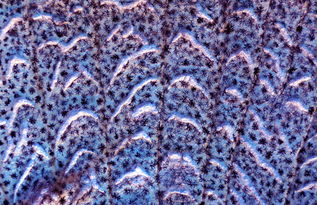Introduction:
Fly fishing, an ancient yet enduring pastime, has captivated anglers around the world with its blend of skill, patience, and connection to nature. One of the most crucial aspects of fly fishing is mastering the art of bait adjustment, commonly referred to as "tuning the float." This article delves into the intricacies of using the bait adjustment technique to enhance your fly fishing experience.

Understanding the Basics of Bait Adjustment:
Before diving into the specifics of how to use the bait adjustment technique, it's essential to understand its purpose. The bait adjustment, or float tuning, is a method used to ensure that the fishing line, leader, and fly are all at the correct depth and angle relative to the water's surface. This is crucial for mimicking the natural movement of insects and other aquatic creatures that fish prey upon.
Materials Needed:
To effectively use the bait adjustment technique, you'll need the following materials:
- A fly rod and reel
- Fly line
- Leader
- Fly
- Float (also known as a strike indicator)
- Nippers
- Scissors
- Float-tuning tools (optional)
Step-by-Step Guide to Using the Bait Adjustment Technique:
Choosing the Right Float: Select a float that is appropriate for the conditions you are fishing. Consider factors such as water clarity, wind, and the size of the flies you will be using. A float that is too heavy or too light can hinder your ability to accurately adjust the depth.
Attaching the Float: Attach the float to the end of your fly line using a loop-to-loop connection. This allows for easy adjustment of the float's position. Ensure that the float is securely attached and that there are no kinks or twists in the line.
Determining the Depth: To determine the depth at which you want your fly to fish, consider the natural habits of the fish you are targeting. For example, if you are fishing for trout, you may want to present your fly at a depth of 1 to 3 feet. For bass, you might need to reach deeper water.
Adjusting the Float: To adjust the float, you can either add or remove weight from the line or leader. If you need to increase the depth, add split shot to the line or leader. If you need to decrease the depth, remove weight or adjust the position of the float.
Using the Float as a Strike Indicator: The float serves as a strike indicator, signaling when a fish has taken the fly. Pay close attention to the float's movement. A sudden dive, a gentle tap, or a complete submersion can indicate a strike.
Fine-Tuning the Bait Adjustment: Once you have established the desired depth, you may need to fine-tune the bait adjustment. This can be done by slightly moving the float up or down the line or by adjusting the weight distribution along the line and leader.
Practicing Your Technique: Practice using the bait adjustment technique in a controlled environment, such as a calm pond or a controlled stream. This will help you become more comfortable with the process and improve your accuracy.
Advanced Tips for Using the Bait Adjustment Technique:
- Wind Considerations: Wind can significantly affect the float's movement. Use a longer leader and a lighter float to compensate for windy conditions.
- Water Clarity: In clear water, use a smaller float and a lighter touch to avoid spooking fish. In murky water, a larger float and a heavier touch may be more effective.
- Leader Length: The length of your leader can impact the float's depth. A longer leader will tend to fish deeper, while a shorter leader will fish closer to the surface.
- Leader Taper: A tapered leader allows for a more natural presentation of the fly. Consider using a leader with a gradual taper to enhance your bait adjustment technique.
Conclusion:
Mastering the bait adjustment technique is a key component of successful fly fishing. By understanding the basics and applying the tips outlined in this article, you can enhance your fishing experience and increase your chances of catching fish. Remember, the art of fly fishing is as much about technique as it is about patience and a deep connection with nature. Happy fishing!












